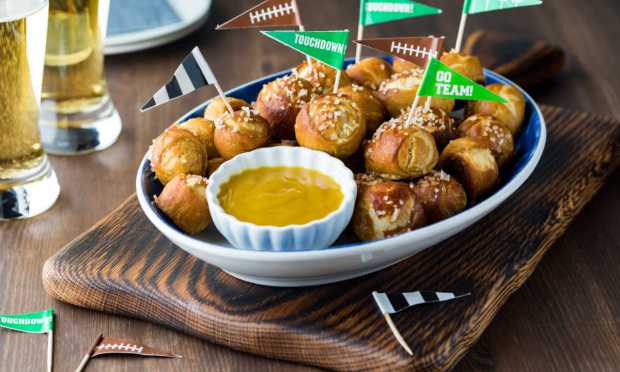Super Bowl Offers Grocers and Restaurants a Much Needed Buying Boost

This year, the Super Bowl will bring a surge of food spending despite overall belt-tightening.
The event is a major occasion for food sales — buffalo wings, chips and dip, hot dogs and more. Many major quick-service restaurant (QSR) chains are doing everything in their power to make sure that game day spending goes to them. These moves are especially key at a time when, noting inflation, consumers are cutting back on their dining spending.
For instance, according to MassLive, McDonald’s is promising a free 20-piece chicken nuggets order with delivery sales totaling $15 or more, while Little Caesars is offering both food and non-food perks for ordering before the game including lower-priced foods and a 30% discount on NFL merch. Other brands are putting together designated Super Bowl food combos such as Taco Bell’s Ultimate Game Day Box.
It is not only restaurants. Convenience retail giant 7-Eleven, for instance, is also taking advantage of the occasion to drive adoption of its 7NOW delivery app, promising free pizza delivery on the day of the game.
Plus, aggregators are looking to get in on the sales boost too. Grubhub and DoorDash are both looking to take advantage of consumers’ next-day hangover needs to bring customers into the fold. The former is doing so by offering a free Taco Bell Breakfast Box with orders of $15 or more, according to QSR. The latter, in an effort to drive adoption of its DashPass delivery subscription, is offering free hangover helpers in partnership with Vita Coco to subscribers.
Grocers have not been doing the same kind of discounting push, but in a sense, they don’t have to. They already benefit from being the lower-priced alternative. Data from the December edition of PYMNTS’ Restaurant Digital Divide study, “The 2022 Restaurant Digital Divide: Restaurant Customers React To Rising Costs, Declining Service,” which draws from a December survey of a census-balanced panel of more than 2,300 consumers who regularly purchase food from restaurants, reveals that across generations, the vast majority of consumers have made adjustments in response to rising prices.
Eighty-eight percent of millennials and Generation Z consumers, 87% of bridge millennials and 85% of Generation X consumers reported making such changes. The most common change that consumers across generations are making is purchasing from restaurants less often. As such, the onus is on restaurants more so than grocers to find ways to draw customers in.
However, grocers are certainly not immune to the effects of inflation on customer spending. Findings from the January edition of PYMNTS’ Consumer Inflation Sentiment study “Consumer Inflation Sentiment: Perception Is Reality,” for which PYMNTS surveyed more than 2,100 consumers in December, reveals that 69% of consumers have made changes to their grocery shopping lists in the last year in response to rising prices. Fifty-nine percent have reduced the quantities of items they are purchasing, and 35% have reduced the quality.
Yet, that inflation is not affecting many Super Bowl favorite food items as much as everyday essentials. In fact, the USDA noted that chicken wing prices have been on the decline, decreasing dramatically in the last year. As such, many consumers may continue to stick to grocery shopping this Super Bowl season, in spite of the restaurant deals and freebies.
